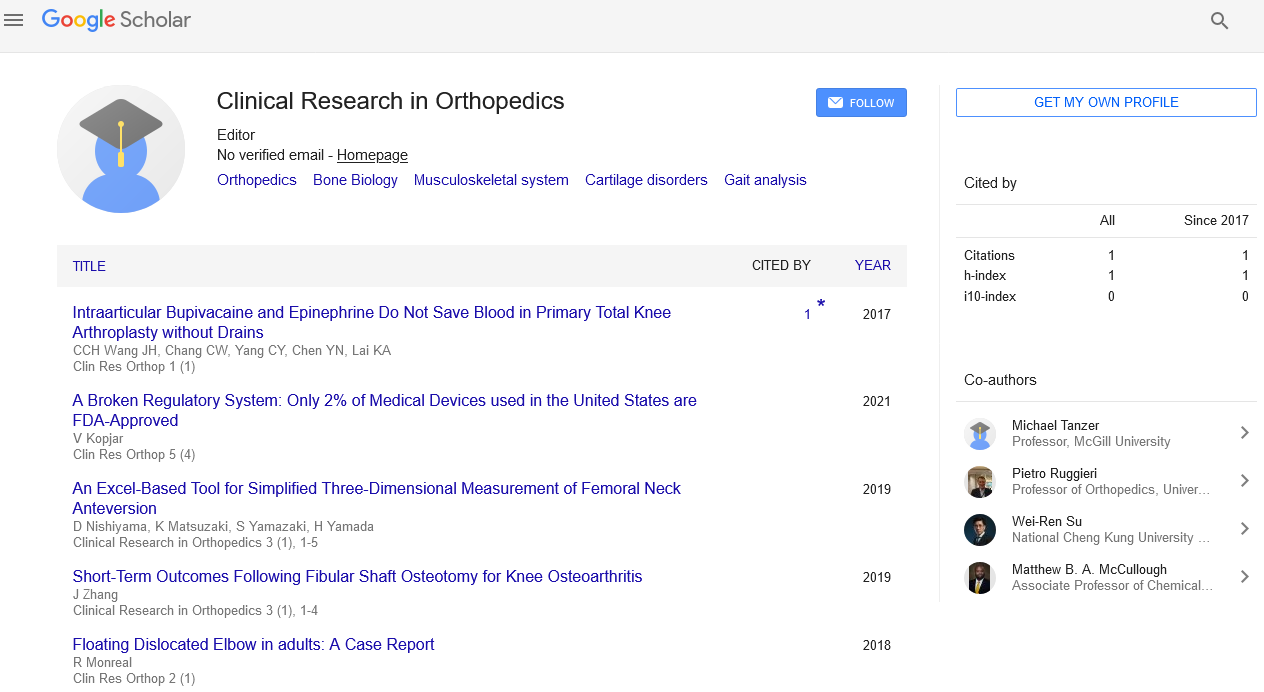Bipedicular fixation of affected vertebra in thoraolumbar burst fracture
Gaurav Maddheshiya
Nims Medical College Jaipur, India
: Clin Res Orthop
Abstract
Burst fractures accounting for greater than 50% of all thoracolumbar trauma1. SSPF (Short Segment Pedicular Screw Fixation) is standard Method. Failure of SSPF can be attributed to inadequate fixation points on the vertebrae and insufficient anterior column support 2. In this study, we propose SSPF using longest possible screws in both pedicle of fractured vertebra. A long pedical screw in bilateral fractured vertebrae supports subcondral bone, superior endplate and allows more correction by cantilever forces created by distraction maneuver. This three point fixation which also prevents long term collapse and loss of kyphosis. Methodology: Pedicle screws were placed at one level above and below the fracture site. Fracture level screws were inserted at the same time with the other screws prior to compression/distraction, and were included into the lording distracting maneuver. Both the fractured pedicels were inserted and care is taken to insert longest possible screws so that they can support subchondral bone and superior end plate of fractured vertebrae. Kyphosis correction achieved by cantilever forces created by distraction and compression maneuver. Visualization Laminectomy performed for confirmation of indirect decompression achieved by distraction maneuver when indicated by the presence of compression over neural tissue in MRI. No Fusion was performed in all.
Biography
Gaurav Kumar Maddheshiya has completed DNB Orthopedic Surgery and he is a specialist in Orthopedic Field in the institution of National institute of medical science, Jaipur. He has been awarded and certified by different National and International journals. His field of interest includes Pain Management and fluid therapy.
E-mail: maddheshiya.gaurav@gmail.com
 Spanish
Spanish  Chinese
Chinese  Russian
Russian  German
German  French
French  Japanese
Japanese  Portuguese
Portuguese  Hindi
Hindi 